Old Trafford
| Capacity | 74 031 |
|---|---|
| Country | England |
| City | Manchester |
| Clubs | Manchester United FC |
| Inauguration | 19/02/1910 (Manchester United - Liverpool FC, 3-4) |
| Construction | 1909-1910 |
| Renovations | 1941, 1946-1949, 1951, 1957, 1973, 1995-2000, 2006 |
| Recod attendance | 76,962 (Wolverhampton Wanderers - Grimsby Town, FA Cup, 25/03/1939) |
| Design | Archibald Leitch (1909) |
| Address | Sir Matt Busby Way, Old Trafford, Manchester |
Advertisement
Old Trafford – stadium description
Why was Old Trafford built?
Before 1902, Manchester United operated under the name Newton Heath and played their matches first at North Road, which had a capacity of 15,000, and later at Bank Street in Clayton, which could hold 50,000 spectators. However, both venues were far from ideal—the pitches were gravelly and often waterlogged, and at Bank Street, thick clouds of smoke from nearby factories made conditions even worse.
When the club was saved from bankruptcy and changed its name, the new president, John Henry Davies, decided that Bank Street was not suitable for a team that had just won the league and the FA Cup. In 1909, he decided to finance the construction of a new stadium. Wanting to spend money wisely, Davies carefully analyzed the available locations in Manchester. Ultimately, the choice fell on a site near the Bridgewater Canal, at the northern end of Warwick Road in the Old Trafford district.
What was the design of Old Trafford?
The stadium's design was entrusted to the renowned Scottish architect Archibald Leitch, who had also designed Hampden Park (Scotland’s national stadium), Ibrox Stadium (home of Rangers), and White Hart Lane (Tottenham Hotspur’s former stadium). Initially, the stadium was intended to accommodate 100,000 spectators, with only the south stand covered. The total construction cost, including the purchase of land, was estimated at £60,000. However, it soon became clear that reaching full capacity would require an additional £30,000. Following the advice of club secretary J. J. Bentley, the club decided to reduce the capacity to around 80,000 seats. At a time when player transfers rarely exceeded £1,000, spending such a large amount on a stadium reinforced the nickname Moneybags United,
which the club had gained after Davies' takeover.
In May 1908, Archibald Leitch approached the Cheshire Lines Committee (CLC), the owner of a nearby railway depot, with a proposal to co-finance the construction of a stand along the railway tracks. Supported by two local breweries, the club offered a £10,000 loan guarantee, payable over five years or covered by half of the ticket revenue. However, the CLC rejected the offer. Instead, they planned to build a new railway station to serve the stadium, expecting annual revenues of £2,750 to cover the investment cost of £9,800. Eventually, Trafford Park station was built, though further from the stadium than initially planned.
When was Old Trafford inaugurated?
The construction was carried out by Brameld and Smith and was completed by the end of 1909. The first match at the new stadium took place on February 19, 1910, with Manchester United facing Liverpool. Although United lost 3-4, the stadium made a huge impression on observers. The most attractive, spacious, and remarkable stadium I have ever seen. As a football ground, it is unparalleled in the world, a pride of Manchester, and the home of a team capable of performing wonders.
These words were published in Sporting Chronicle on the day of Old Trafford’s inauguration.
What was the first renovation of Old Trafford?
In 1936, as part of a £35,000 renovation, the United Road Stand was covered for the first time. Two years later, the south corner sections of the stadium were also roofed.
How was Old Trafford used during World War II?
After the outbreak of World War II, Old Trafford was requisitioned by the military and used as a storage facility. Despite this, matches continued to be played there until a German bombing raid on Trafford Park on December 22, 1940, severely damaged the stadium. The destruction forced the postponement of a Christmas Day match against Stockport County, which had to be moved to the opponent's ground. Football returned to Old Trafford on March 8, 1941, but another air raid on March 11 caused further extensive damage, destroying the main stand and forcing the club to relocate to Cornbrook Cold Storage, owned by United's chairman James W. Gibson.
Thanks to Gibson’s efforts, the War Damage Commission granted Manchester United £4,800 for debris clearance and £17,500 for the reconstruction of the stands. During the rebuilding period, the club rented Maine Road from their rivals Manchester City, paying £5,000 per year plus a percentage of ticket revenue. The stadium was reopened in 1949, initially without a roof. The first league match played at the renovated stadium was on August 24, when United defeated Bolton Wanderers 3-0.
How did Old Trafford evolve after subsequent renovations?
In 1951, the roof over the main stand was restored, and in the following years, the other stands were also covered. In 1959, the Stretford End was roofed. Around this time, the club also invested in floodlights, allowing night matches to be played in European competitions without needing to relocate to Maine Road. To prevent shadows on the pitch, two sections of the main stand's roof were cut out. The first floodlit match at Old Trafford was played on March 25, 1957, against Bolton Wanderers.
How was Old Trafford redeveloped in the 1990s?
Since the post-war renovations, Old Trafford’s capacity had steadily declined. In the 1980s, it dropped from its original 80,000 to about 60,000. Another reduction followed in 1990 after the Taylor Report mandated that all top-flight stadiums convert to all-seater venues. As a result, plans to redevelop the Stretford End, which initially included a standing terrace and a cantilevered roof, had to be significantly altered. The estimated cost rose from £3-5 million to around £10 million, and the stadium's capacity fell to a historic low of 44,000 seats.
Manchester United's growing popularity in the early 1990s made further expansion essential. In 1995, the club demolished the 30-year-old North Stand and began constructing a new three-tier structure, scheduled for completion in time for Euro 96. In March 1995, United purchased 20 acres of land in Trafford Park for £9.2 million. Construction began in June and was completed in May 1996. Designed by Atherden Fuller, the new stand cost £18.65 million and could accommodate around 25,500 spectators, raising Old Trafford’s capacity to over 55,000. It also featured Europe's largest cantilevered roof, extending 58.5 meters from the back wall to the front edge of the stand.
Successes in subsequent years led to further expansions. In the early 2000s, a second tier was added to the East Stand, temporarily increasing capacity to about 61,000. A further 7,000 seats were added after the West Stand expansion, reaching a total capacity of 68,217, making Old Trafford the largest club stadium in England and the UK.
When was the last renovation of Old Trafford?
The last expansion of Old Trafford took place between July 2005 and May 2006, increasing the stadium's capacity by approximately 8,000 seats through the addition of second tiers in the north-west and north-east quadrants. The first of the new seats were used on March 26, 2006, when an attendance of 69,070 set a new Premier League record. This record was gradually improved, reaching its highest level on March 31, 2007 – 76,098 spectators watched Manchester United’s 4-1 victory over Blackburn Rovers, meaning only 114 seats remained unoccupied.
In 2009, a seating reorganization reduced the stadium’s capacity by 255 seats, setting a new maximum limit of 75,957. As a result, the attendance record at Old Trafford remained unchanged until another expansion.
What events took place at Old Trafford for its 100th anniversary?
On February 19, 2010, the stadium celebrated its 100th anniversary. In the 100 days leading up to the anniversary, Manchester United’s official website published a daily highlight from the venue’s history.
As part of the centenary celebrations, a drawing competition was held for students from three local schools, in which young artists depicted the stadium’s past, present, and future. The winning artworks were permanently displayed in the family stand at Old Trafford. Additionally, the club’s museum opened a special exhibition dedicated to the stadium’s history, featuring memorabilia such as the program from the inaugural match and a hand-crafted 1:220 scale model of the stadium by Peter Oldfield-Edwards.
During Manchester United’s match against Fulham on March 14, fans received a replica of the program from the first game played at Old Trafford. During the half-time break, relatives of the players from the inaugural match and family members of former chairman John Henry Davies and family members of architect Archibald Leitch took part in the burial of a time capsule containing memorabilia related to Manchester United.
What does Old Trafford, Manchester United’s stadium, look like?
The pitch at Old Trafford is surrounded by four covered stands with seating, officially named the Sir Alex Ferguson Stand (North Stand), East Stand, Sir Bobby Charlton Stand (South Stand), and West Stand. Each has at least two tiers, except for the Sir Bobby Charlton Stand, which is a single-tier structure due to construction limitations. The lower level of each stand is divided into Lower and Upper sections – the Lower sections were converted from terraces to seating in the early 1990s.
The Sir Alex Ferguson Stand, previously known as the United Road Stand and North Stand, is the largest at the stadium – it has three tiers and can accommodate around 26,000 spectators. It houses executive suites and hospitality boxes. The stand, originally single-tiered, was expanded in 1996. It features several key facilities, including the Red Café – Manchester United’s themed restaurant and bar – as well as the club’s museum and trophy room. Originally, the museum was located in the south-east corner of the stadium but was moved to the renovated North Stand in 1998 and officially opened by Pelé. In 2011, to mark Alex Ferguson’s 25th anniversary as Manchester United’s manager, the North Stand was renamed in his honor. A year later, a statue of Ferguson was unveiled outside the stand.
Opposite the Sir Alex Ferguson Stand is the Sir Bobby Charlton Stand, previously known as the South Stand, which was officially renamed in honor of the Manchester United legend in 2016, before a match against Everton, marking the 60th anniversary of his club debut. Although single-tiered, it houses most of the club’s executive suites and VIP seating. At the center of the stand are the press seats, offering media representatives the best view of the pitch. This is also the stand least shown on TV broadcasts, as the camera gantry is positioned here. TV studios are located at both ends of the stand: the east end hosts the headquarters of MUTV, the club’s television channel, while the west end serves broadcasters like Sky Sports.
The West Stand, known as Stretford End, is the most iconic stand at Old Trafford. This is where Manchester United’s most passionate fans gather. It was the last fully terraced section of the stadium before being converted to seating in the early 1990s. Many flags and banners supporting the team are displayed here. Denis Law, the legendary United striker, was nicknamed King of the Stretford End,
and a statue of him is located on the upper tier of the stand.
The East Stand, also known as the Scoreboard End, has a capacity of around 12,000. It includes the section for disabled fans, which offers seating for 170 supporters and their companions. It also accommodates away fans. Behind the façade of the stand is the club’s administrative center, which houses offices for the Inside United magazine, the club’s official website, and other organizational departments. Above the club megastore, a statue of Sir Matt Busby is positioned, while across the road from the stand, on Sir Matt Busby Way, stands the United Trinity
statue featuring George Best, Denis Law, and Bobby Charlton, unveiled in 2008 to mark the 40th anniversary of Manchester United’s first European Cup triumph.
On the stadium’s east side is Hotel Football – a football-themed hotel co-owned by former United captain Gary Neville. It opened in 2015, with part of its funding coming from proceeds from Neville’s testimonial match.
The pitch is slightly elevated in the center to aid water drainage. Beneath the surface, a heating system with 37 kilometers of plastic pipes prevents the turf from freezing in winter. The grass is regularly watered, mowed, and replaced as needed – for example, during the 1998–99 season when Manchester United won the treble, the pitch was reconstructed mid-season.
Manchester United’s megastore has had several locations since its opening. In the 1990s, it was in the courtyard of the West Stand but moved to its current 1,600m² location on the ground floor of the East Stand in 2000. Initially managed by Nike, the store returned to club control in 2015 after the sponsorship deal expired.
In 2009, a 10-meter Hublot clock tower with four 2-meter diameter clock faces – the largest in the company's history – was installed in the stadium parking lot.
The teams’ dugouts are located in the center of the stand, slightly elevated for a better perspective. Nearby is the historic players’ tunnel, used until 1993. It is the only remaining part of the original 1910 stadium that survived World War II bombings. In 2008, it was renamed the Munich Tunnel to commemorate the 50th anniversary of the Munich air disaster. The main tunnel is now in the south-west corner and also serves as an entrance for emergency services. Above it, retractable seating has been installed to allow the passage of larger vehicles if necessary.
What is Old Trafford called?
“This is Manchester United Football Club, this is the Theatre of Dreams” – these words appeared in John Riley’s 1987 book simply titled Football, and were spoken by one of Manchester United’s greatest players, Sir Bobby Charlton. In the 1990s and early 2000s, the term “Theatre of Dreams” was widely used in a positive context. However, in the 2020s, it is increasingly used mockingly, pointing to the deteriorating state of the stadium.
What are the plans for Old Trafford?
For many years, the main focus was on expanding the existing Old Trafford. However, on March 11, 2025, as part of a broader revitalization plan for the Old Trafford district, Manchester United and Foster + Partners revealed a design for a brand-new 100,000-seat stadium.
Its design is inspired by the legendary Red Devils trident, which will be reflected in the unique shape of the roof. The stadium will be open from the outside but covered by a large canopy, providing protection from the elements. It will feature cutting-edge eco-friendly solutions, including solar panels, a rainwater harvesting system, and technologies that minimize the impact of solar radiation.
The project is expected to have a major impact on the regional economy. Manchester United estimates that the stadium’s construction, along with the accompanying revitalization, will generate an additional £7.3 billion for the local economy, create 92,000 new jobs, and enable the construction of 17,000 new homes. The club also anticipates that the complex will attract around 1.8 million additional visitors annually.
The design of Manchester United’s new stadium can be viewed on a separate page.
What is the attendance record at Old Trafford?
Old Trafford has seen some impressive attendance records over the years. Although the Red Devils are the stadium's hosts, the highest number of spectators did not gather there for a match, but for the semi-final of the FA Cup in 1939. The match between Wolverhampton Wanderers and Grimsby Town was watched by 76,962 fans. However, this was before the stadium was converted into a seated stadium.
The current attendance record for Old Trafford as a fully seated stadium is 76,098. It was set on March 31, 2007, when Manchester United hosted Blackburn Rovers in a Premier League match. The highest attendance for a friendly match took place on August 5, 2011, when 74,731 spectators watched United's preseason clash with New York Cosmos.
The stadium's history also includes matches with the fewest spectators. The lowest attendance in the post-war era was recorded on April 29, 1950, when only 11,968 people attended the Manchester United vs. Fulham match. An even more extreme case occurred on May 7, 1921, during the Stockport County vs. Leicester City match, where the official attendance was only 13 people. In reality, however, there were many more fans in the stadium - some of the 10,000 spectators who had previously watched the Manchester United vs. Derby County match remained in the stands.
The average attendance at Old Trafford during its best season was 75,826, which was in the 2006/07 season. Two years later, the stadium broke another record – the highest total number of spectators in a single season when 2,197,429 people watched United win their third consecutive English championship, League Cup and UEFA Champions League. In the 2023/24 season, the Red Devils achieved an average attendance of 98.2% and 73,534 spectators.
However, the history of Old Trafford goes back far beyond the Premier League era. Before Wembley Stadium opened in 1923, the stadium hosted the FA Cup finals several times. In 1911, Bradford City beat Newcastle United 1-0 in front of 58,000 spectators, and four years later Sheffield United triumphed over Chelsea 3-0 in the so-called Khaki Cup Final,
where the stands were filled with numerous soldiers.
The highest attendance at a Manchester United league game before World War II was on December 27, 1920, when 70,504 fans watched the team lose 1:3. Old Trafford was also the venue for international matches. The first international match took place there on April 17, 1926, when England lost to Scotland 0:1 in front of 49,429 spectators.
What sports events have taken place at Old Trafford?
Old Trafford is primarily the home of Manchester United, but over the years it has also hosted many other prestigious football events. From 2001 to 2007, when Wembley Stadium was being rebuilt, Old Trafford was one of the main arenas for the England national team, hosting 14 matches for the national team – more than any other stadium during this period. The last international match took place on 7 February 2007, when England lost 0:1 to Spain. Old Trafford hosted matches of the 1966 World Cup and Euro 96.
In 2003, Old Trafford hosted the UEFA Champions League final, in which AC Milan defeated Juventus after a penalty shootout. Furthermore, the stadium was one of the arenas of the football tournament at the 2012 Summer Olympics, hosting matches of both the men's and women's tournaments, including the semi-finals of both categories.
Women's football is also playing an increasingly important role at Old Trafford. In 2021, the first Women's Super League match between Manchester United Women and West Ham United was played here. A year later, the Manchester United Women vs. Everton match attracted 20,241 spectators, setting a new attendance record for the club's women's team. In 2022, the stadium also hosted the opening match of UEFA Women's Euro 2022, in which England beat Austria in front of 68,871 fans - the largest crowd in the history of the Women's European Championship.
Old Trafford has also hosted many non-football sporting events. In 1993, it was the venue for the unification fight in the super-middleweight division between Chris Eubank and Nigel Benn. In 1981, the stadium hosted the northern section of the Lambert & Butler Floodlit Competition. Even before the football stadium was built, the traditional Scottish game shinty was played here. During the First World War, American soldiers played baseball here.
Since 2006, the stadium has hosted the biennial charity match Soccer Aid, which attracts many well-known figures from the world of sport and entertainment. The only exception was the 2008 edition, which took place at Wembley.
What non-sporting events have taken place at Old Trafford?
Old Trafford has also hosted numerous cultural and private events. Renowned artists like Bon Jovi, Genesis, Bruce Springsteen, Status Quo, Rod Stewart, and Simply Red have performed there. In September 1994, a special edition of Songs of Praise was filmed at the stadium.
The venue is also popular for private events, including weddings, Christmas parties, and business conferences. The first wedding at Old Trafford took place in the Premier Suite in February 1996, starting a tradition of hosting such celebrations at the stadium.
How Old Trafford compares to other Premier League stadiums?
Advertisement
Pictures
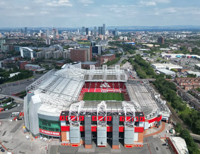
31.07.2024 © Paweł Mogielnicki 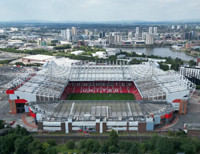
31.07.2024 © Paweł Mogielnicki 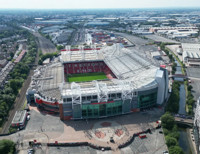
31.07.2024 © Paweł Mogielnicki 
02.07.2012 © Greater Manchester Police 
10.04.2013 © Airviews Photography (cc: by-nd) 
19.04.2015 © Jose Francisco del Valle Mojica (cc: by) 
28.01.2018 © Adam Koprowski 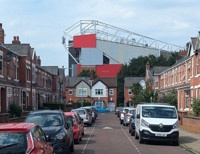
31.07.2024 © Paweł Mogielnicki 
11.08.2014 © Guts Gaming (cc: by) 
28.01.2018 © Adam Koprowski 
11.08.2014 © Guts Gaming (cc: by) 
28.01.2018 © Adam Koprowski 
23.10.2011 © Johnovic Alex K 
01.02.2015 © Ian Johnson 
23.09.2016 © Ian Johnson 
01.02.2015 © Ian Johnson 
23.09.2016 © Ian Johnson 
23.09.2016 © Ian Johnson 
13.12.2017 © Markus Unger (cc: by) 
02.01.2013 © Paweł Haziak 
02.01.2013 © Paweł Haziak 
16.01.2010 © Our Vale 
28.01.2018 © Adam Koprowski 
28.01.2018 © Adam Koprowski 
28.01.2018 © Adam Koprowski 
28.01.2018 © Adam Koprowski 
28.01.2018 © Adam Koprowski 
28.01.2018 © Adam Koprowski 
23.03.2015 © Felipe Gálvez 
26.08.2017 © Alex Hannam 
16.08.2012 © Ian Sutton 
29.02.2016 © Manchester Fire (cc: by-nc) 
29.02.2016 © Manchester Fire (cc: by-nc) 
26.08.2017 © Ian Johnson 
26.08.2017 © Ian Johnson 
13.12.2017 © Markus Unger (cc: by) 
02.01.2013 © Paweł Haziak 
26.08.2017 © Ian Johnson 
29.07.2012 © hnns_schtt 
06.05.2014 © Dom Fellowes
Related news
2025
-
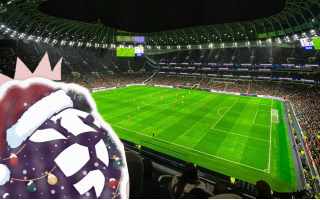
England: Premier League at the turn of the year. 7 must-see fixtures
December in the Premier League is when everything accelerates: packed stadiums, festive energy and matches that can reshape the title race. This article highlights the key fixtures you should consider attending — and shows how to secure tickets before availability disappears.
-
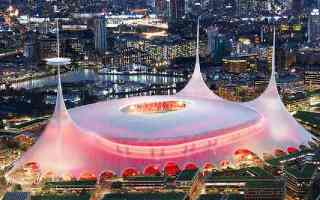
England: The dream of New Trafford is still alive – but the club faces two major obstacles
Manchester United’s vision for a state-of-the-art, 21st-century stadium remains on the table — but key obstacles continue to block progress. According to BBC, while conceptual work is ongoing, no binding decisions have yet been made.
-
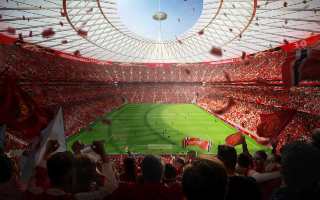
England: Manchester United consult fans on a new stadium
Manchester United has launched another round of consultations regarding plans to build a new stadium. The club has opened a wide-ranging survey among supporters to gather their expectations concerning stadium features, ticket pricing and matchday atmosphere.
-

England : New Trafford architect reassures fans six months after design reveal
Manchester United is preparing for the biggest infrastructure project in its history – a new 100,000-seat stadium that will replace the aging Old Trafford. The concept comes from renowned architect Lord Norman Foster, designer of London’s “Gherkin” and Millennium Bridge, who calls it the most important project of his career.
-
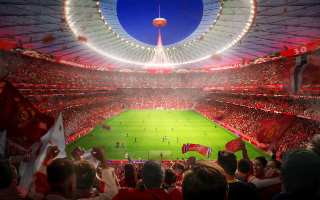
England: Manchester United considering controversial funding model for new stadium
Manchester United are laying the groundwork for a new stadium project, and part of the investment could be financed through a PSL system, widely used in American sports. If implemented, fans would have to pay a fortune just for the right to buy a season ticket.
-
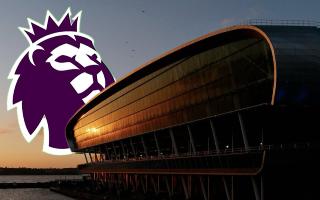
England: Premier League's 50,000+ seat stadiums after Everton's new ground opens
The Premier League is home to some of football’s biggest stages, where fans create unforgettable atmospheres. Everton’s new stadium joins the ranks of venues with 50,000+ seats. Discover the full list of English football giants.
-
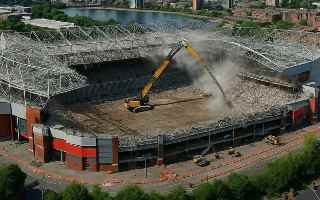
England: When and how will Old Trafford be demolished?
Manchester United plans to build a new stadium with a capacity of 100,000 seats, and Old Trafford is set to be demolished. Construction is expected to start shortly, with completion planned for the 2030/31 season.
-
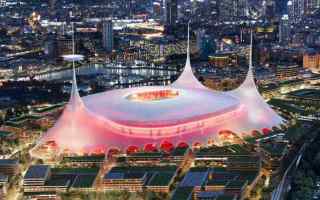
England: United may give up towers to fund a stadium and host the World Cup
Manchester United’s new co-owner, Sir Jim Ratcliffe, has announced an ambitious plan to build the largest and most profitable football stadium in the world. However, the project is expected to cost around £2 billion. At the same time, Manchester is presented with a chance to host a major tournament.
-
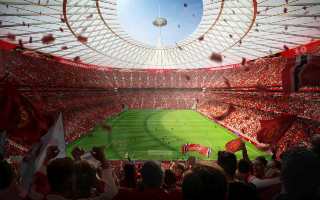
England: Manchester United with strong government support for new stadium
The UK government is "eager to get the project started" and is fully supportive of Manchester United's plan to build a new stadium. Earlier this month, the club confirmed plans to leave Old Trafford and move to a new 100,000-seat stadium.
-
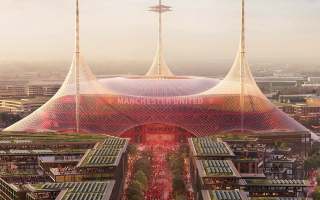
England: Manchester United announces construction of a new 100,000-seat stadium!
Manchester United has announced plans to build a new 100,000-seat stadium, marking a shift away from the previously considered renovation of Old Trafford. The new venue will be constructed in close proximity to the current stadium.
-
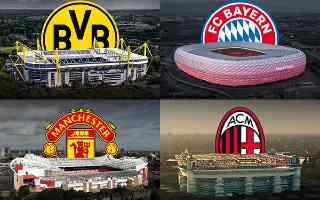
UEFA: 2. Bundesliga ahead of Arsenal and Atletico! Surprising attendance figures in Europe
Who attracts the biggest crowds to their stands, and who unexpectedly falls short of the numbers needed to make the top ranks? The latest attendance report for European leagues in the 2023/24 season provides the answers.
-
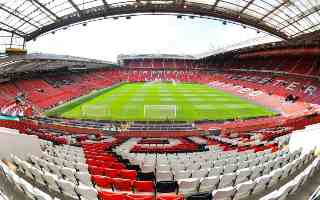
England: Old Trafford redevelopment plans receive government support
Manchester United has secured significant backing for its plans to redevelop Old Trafford, with UK Chancellor of the Exchequer Rachel Reeves expressing her support for the ambitious project.
-
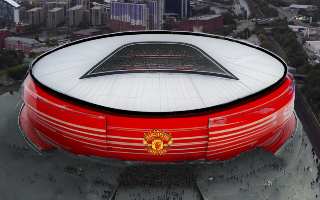
England: New, bigger stadium for Manchester United
What does the future hold for Old Trafford, the legendary home of Manchester United? Once a symbol of football’s grandeur, the stadium is now plagued by leaks, aging infrastructure, and low food hygiene ratings.
-
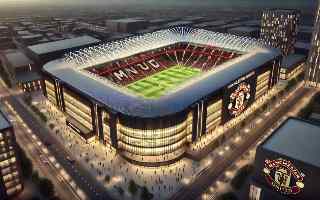
England: Old Trafford could be nearly as big as Camp Nou
Manchester United has announced that a decision on whether to redevelop Old Trafford or build a new stadium will be made by the summer. What will be the capacity of the stadium in the future?
2024
-
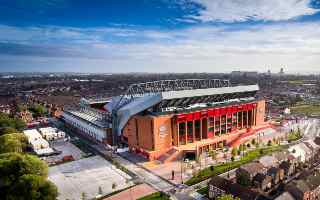
England: Joint protest by Premier League fans against ticket price increases
This Sunday, during Premier League matches at Old Trafford and Anfield, supporters of four clubs - Manchester United, Liverpool, Everton and Manchester City - will unite to protest against rising ticket prices. The protest will be held under the slogan: "Enough is enough - stop exploiting loyalty".
-
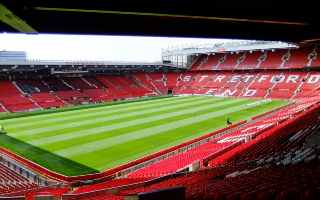
England: Manchester United postpones decision on new stadium
Manchester United has yet to make a final decision regarding the future of Old Trafford. The club is considering both a major renovation of the current stadium and the construction of an entirely new venue.
-

England: Will government introduce new rules on stadium sales?
The government is preparing to grant powers to an independent regulator that will prevent Premier League clubs from selling their stadiums to affiliated companies or third parties.
-
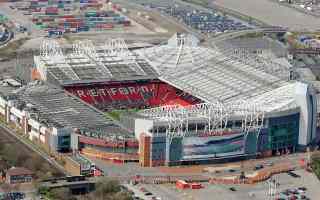
England: New Manchester United stadium construction to begin in 2025?
According to The Sun, the task force working on Manchester United's future home has agreed that building a new stadium next to Old Trafford is the "most logical proposal."
-
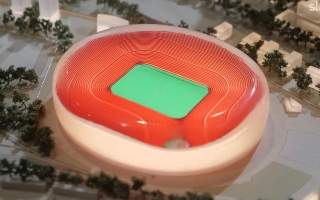
England: First renderings of new Manchester United stadium!
Manchester United's plans for a new Old Trafford have taken another step forward as the club has revealed the first visuals of the redeveloped stadium. In August, the club hired renowned British architect Sir Norman Foster to design the redevelopment of United's grounds.
-
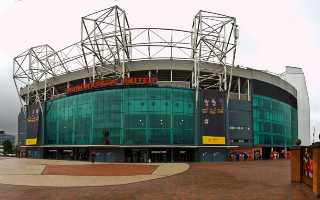
England: Is it the end of Old Trafford?
Manchester United is ready to abandon plans to preserve Old Trafford if a new £2 billion super stadium is built nearby. This summer, the club revealed plans to reduce the current arena’s size to preserve its historical character and create space for the women’s and youth teams.

 StadiumDB
StadiumDB